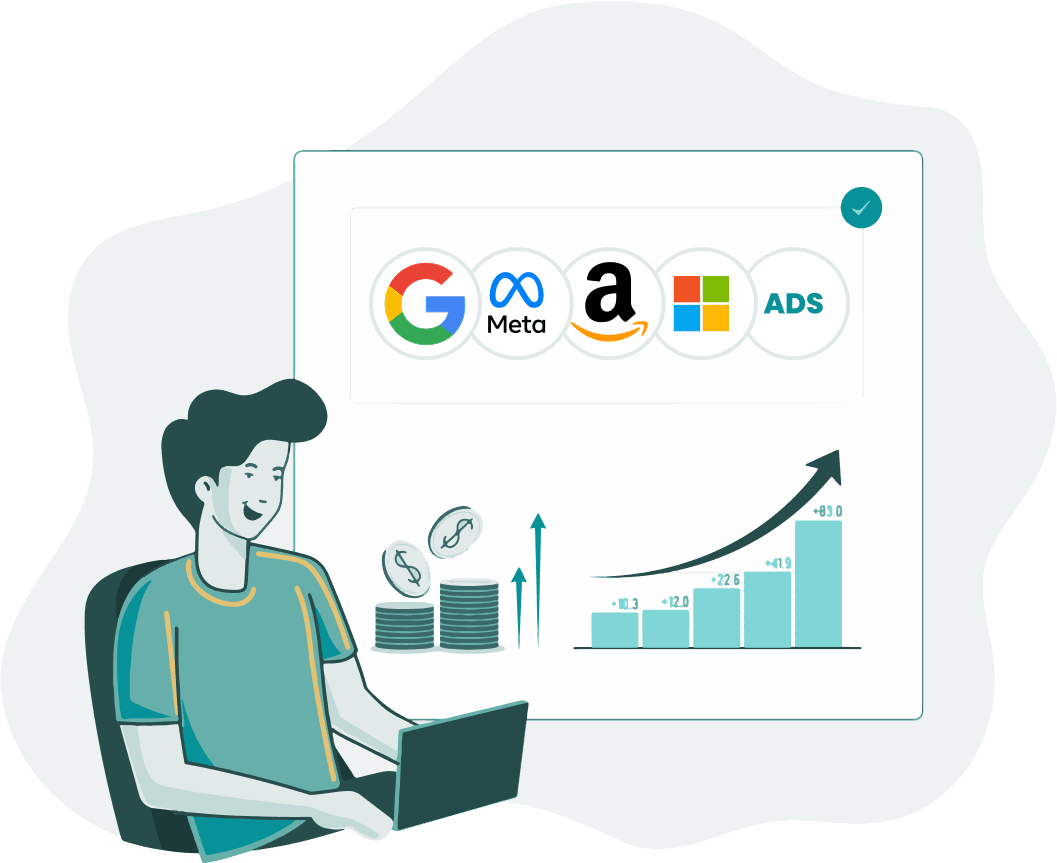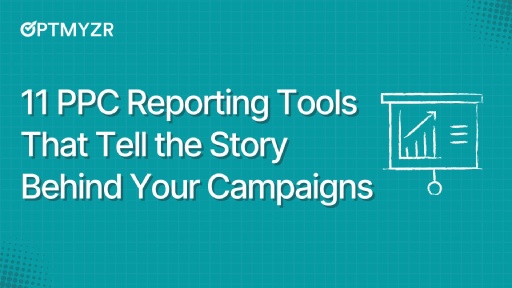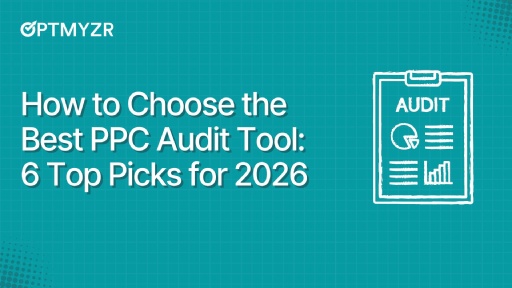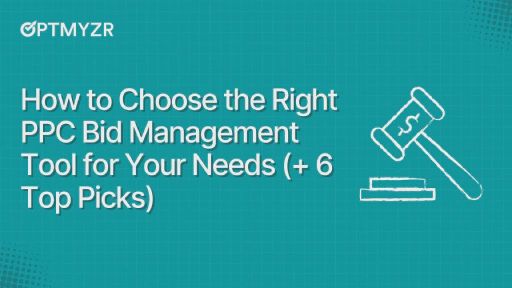“Can’t I just do all of this in Google Ads?”
That’s one question many PPC marketers ask us during a sales conversation. It’s a fair one. Google Ads has grown more sophisticated with tools like Editor, Automated Rules, and custom scripts.
So, where does Optmyzr fit in?
This article lays out the answer clearly and in depth. We’ll highlight what Google Ads does well, but also spotlight where it falls short and how Optmyzr fills those gaps. The reality is that Optmyzr doesn’t replace Google Ads. It complements it with automation, analytics, scalability, and workflow capabilities designed for modern paid media teams.
What Google Ads gets right and where it ends
Let’s start by acknowledging the strengths of Google’s native tools:
- Google Ads Editor: A fast and powerful tool for campaign builds, bulk uploads, and offline changes.
- Automated Rules: A simple way to apply changes when conditions are met.
- Scripts: Ideal for advertisers with the technical know-how to write and maintain custom JavaScript.
That said, Google’s tools often lack:
- Cross-account or cross-campaign visibility
Example: A PPC manager at an agency wants to compare budget pacing across 15 ecommerce clients in one view, not jump between individual accounts. Optmyzr’s Account Dashboard solves this.
- Custom data inputs or business context
Example: A retailer wants to adjust bids based on profit margin per SKU, which exists in their Google sheet but isn’t available inside Google Ads. Optmyzr’s Rule Engine can ingest and act on it.
- UI for complex logic or workflows
Example: Setting up layered logic like “Pause if CTR drops by 10% AND CPC rises by 10% AND ad relevance is below average” is impossible in native rules, but you can do the same as a simple drag-and-drop operation in the Rule Engine.
- Predictive insights or root cause analysis
Example: A client’s conversions dropped 40% last week. Instead of pulling 5 different reports, PPC Investigator identifies that it’s due to PMax shifting budget from a high-ROAS asset group.
- Team collaboration tools
Example: An agency wants its analysts to review all automated changes before they’re applied. Optmyzr enables scheduled suggestions with human-in-the-loop review via Blueprints.
As teams scale, these gaps turn into bottlenecks.
What you can’t do in Google Ads but can in Optmyzr
Feature | Google Ads | Optmyzr |
Campaign grouping by performance | ❌ | ✅ |
Feed-based automation | ❌ | ✅ |
Cross-entity analysis | ❌ | ✅ |
Creating Shopping campaigns at scale* | ❌ | ✅ |
Industry insights | ❌ | ✅ |
Multi-account dashboards | ❌ | ✅ |
Team task assignment and SOPs | ❌ | ✅ |
Real-time anomaly detection | ❌ | ✅ |
Integrated competitor insights | ❌ | ✅ |
Channel-specific PMax audits | ❌ | ✅ |
Example: *Optmyzr’s Shopping Campaign Management tool lets you build campaigns with hundreds of ad groups and thousands of product groups in minutes, not hours. It’s impossible to do this manually in Google Ads without risking errors and delays.
What you can do in Google Ads but tediously
Google Ads doesn’t make certain workflows easy. You can technically complete them, but only with time, spreadsheets, and workarounds. Here’s where Optmyzr streamlines the process:
Task | Google Ads | Optmyzr |
Finding high- and low-performing keywords | Manual spreadsheets | Search Terms N-Grams |
Investigating why CPAs rose | Multi-report exports | PPC Investigator |
PMax asset-level auditing | Click through 1-by-1 | Optmyzr Express (Audit in bulk) |
Forecasting and budget reallocation | A long, multi-step process | Spend Projection, Optimize Budgets tools |
Google Ads Automated Rules Vs. Optmyzr’s Rule Engine
Google’s Automated Rules let you:
- Run a simple rule on one condition (e.g., Pause keyword if CTR < 1%)
- Choose from preset date ranges
- Set static thresholds
Optmyzr’s Rule Engine is built for powerful automation. It allows you to:
✅ Combine multiple rules
- Use if–then–else logic
- Run multiple actions per entity
- Example: Pause expensive keyword, label it, and trigger a Slack alert
✅ Use multiple or custom date ranges
- Compare “last 7 days” vs. “previous 7 days”
- Build custom lookback windows like 14 to 8 days vs. 7 to 1 days
✅ Relative comparisons
- Find keywords with CPA > campaign average by 50%
- Compare CTR at different levels (e.g., ad group vs. campaign)
✅ Pull external data
- Connect Google Sheets for margin, weather, seasonality, stock levels, etc.
- Example: Pull profitability scores from your CRM and adjust bids accordingly
✅ Review or schedule
- Preview suggestions before applying
- Run manually or set recurring automations
✅ Exclude recent changes
- Prevent bid stacking
- Stabilize long-term optimizations
“Rule Engine is certainly one of the amazing sections of Optmyzr because it’s really like your dedicated, highly flexible, and scalable optimization hub where you can automate a lot of very valuable optimizations for your clients with infinite customizations.” - Matthieu Tran-Van
Learn how Matthieu Tran-Van saw a 10x productivity boost & a 28% revenue surge through Optmyzr
Scriptless automation: A safer way to scale
Scripts offer flexibility, but they come with challenges:
- No safety checks or preview
- Break when APIs change
- High technical barrier
- No UI for oversight
Optmyzr’s automation approach matches the logic of scripts, with a visual builder, version control, audit logs, and support.
Google Ads scripts | Optmyzr |
Technical expertise required | No-code logic builder |
No audit trail | Version history + UI preview |
Must maintain yourself | Supported + updated regularly |
Rule Engine, Campaign Automator, and Optmyzr Express offer 90% of what scripts can do, with 0% of the overhead.
Campaign Automator helps SearchLab Digital boost their client’s conversion rate by 42%
Optmyzr offers automation with accountability (what we like to call PPC insurance)
Score philosophy: Transparent, not self-serving
Google’s Optimization Score often nudges advertisers toward recommendations that increase ad spend, not always results. In contrast, Optmyzr offers its own scoring framework that:
- Aligns with your business goals (e.g., ROAS targets, conversion value)
- Isn’t incentivized by click volume or Google’s revenue
- Reflects adherence to best practices, not just product adoption
This matters when your job is to balance performance with cost efficiency, not simply to check off Google’s to-do list.
Google’s AI-driven recommendations and campaigns like PMax have introduced helpful features, but also unexpected risks:
“Google re-enabled expanded targeting without notice and cost us thousands.” — Melissa Mackey
Learn more: How to protect your Google Ads account from glitches
Optmyzr’s platform is designed as a safety net:
- Budget anomaly alerts
- PPC Investigator to trace what went wrong
- Change History widget to map edits to performance
- Smart Placement Exclusions
- Asset audit for PMax
- Redundant keyword flagging (protect brand terms)
These features help you spot Google-initiated changes before they become costly.
Optmyzr is built for scale and teams
Reporting that goes beyond Google
Optmyzr supports multi-channel, branded reports that:
- Pull data from Google, Microsoft, Amazon, Meta, LinkedIn, and more
- Allow full customization of metrics (e.g., ROAS, cost/revenue ratios)
- Include annotations, client commentary, and agency branding
- Can be scheduled for recurring delivery
For agencies, this means less time formatting spreadsheets and more time showing value to clients.
Built-in workflows and safeguards
Optmyzr goes beyond single-user control to support complex PPC teams:
- Assign optimization tasks via Blueprints
- Set rule reviews so that junior team members can’t accidentally push changes live
- Enable approval workflows for client-side or stakeholder review before launch
Example: An analyst sets up a budget reallocation in Rule Engine. Instead of applying immediately, the task is queued for approval from the account lead.
Optmyzr was designed for agencies and enterprises, not just individual account managers.
For agencies:
- View performance across all clients from one dashboard
- Create account templates and SOPs using Blueprints
- Collaborate with analysts, interns, and specialists
For in-house teams:
- Clone campaign structures across markets or business units
- Build shopping campaigns in bulk
- Use opt-in workflows to review changes before they’re live
Optmyzr doesn’t compete with Google Ads. It complements it.
If you’re a solo advertiser managing one account, Google’s native tools might be enough. But if you’re:
- Managing multiple accounts or clients
- Juggling various channels (Google, Microsoft, Meta)
- Needing reports, automations, and alerts that reflect your business, not Google’s preferences
…then Optmyzr becomes indispensable.
Use Google’s tools where they shine. But when you need clarity across accounts, custom automations that scale, protection from black-box automation, and workflow visibility for teams, Optmyzr is your edge.









